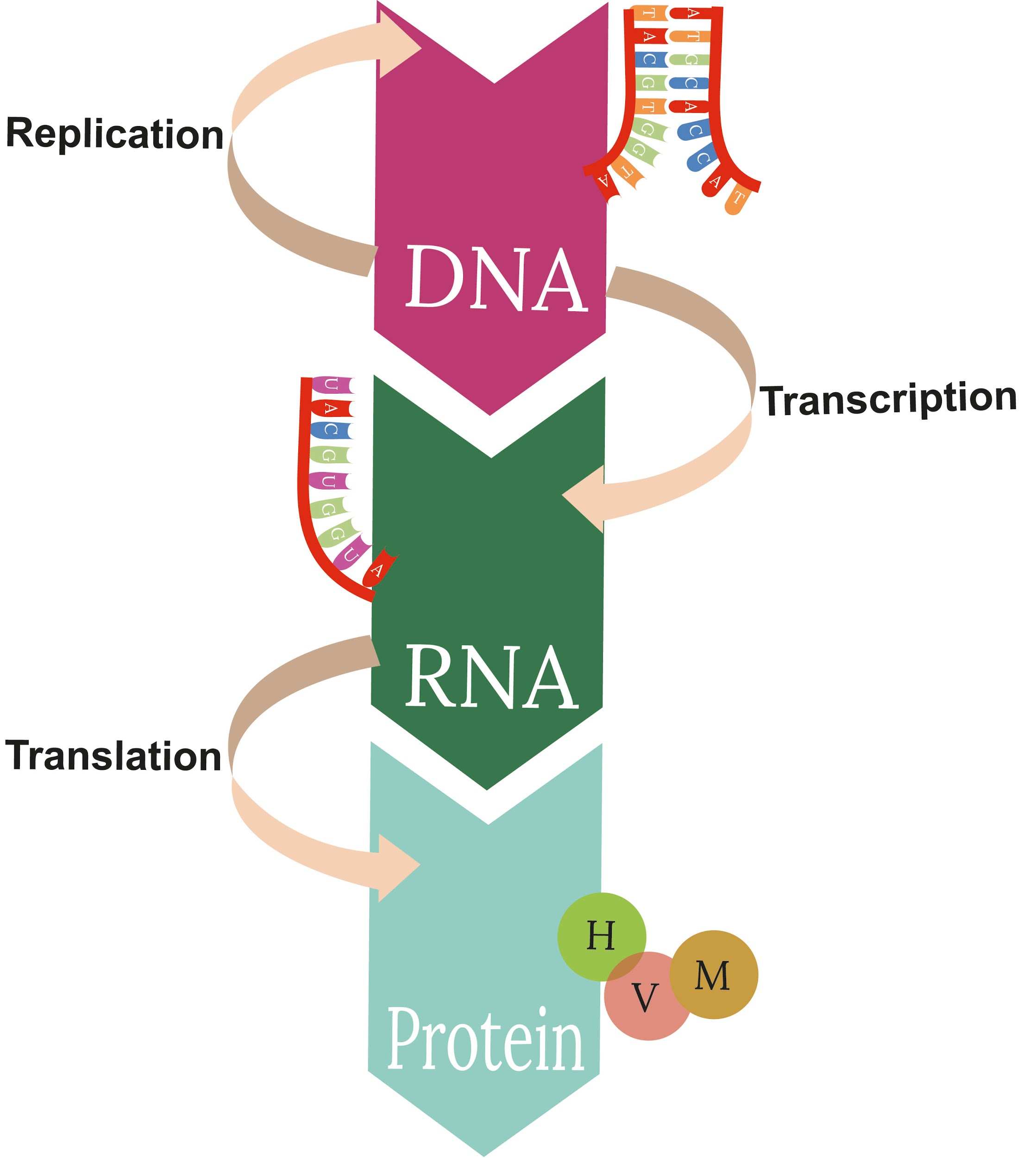
Central dogma of molecular biology was modified with the discovery of
(a)Ligase
(b)RNA polymerase
(c)DNA polymerase
(d)Reverse transcriptase
Answer
449.1k+ views
Hint: It's a system for understanding the exchange of sequence data between data conveying biopolymers, inside the commonest or general case, in living creatures. There are 3 significant classes of such biopolymers: DNA and RNA (both nucleic acids), and protein. There are 3 × 3 = 9 conceivable direct transfers of data that will occur between these.
Complete answer:
The molecular path of the flow of genetic information is explained by central dogma. Appropriately, the progression of hereditary data is unidirectional and includes four cycles.
Replication of DNA copies the genetic information present in it which is transcribed into RNA by an RNA polymerase enzyme.
The RNA sequence of ribonucleotides is translated into an amino alkanoic acid sequence of polypeptides by the method of translation. Consequently, the progression of hereditary data is unidirectional and follows the way: DNA-RNA-protein.
H. Temin and D. Baltimore demonstrated that the retroviruses, in particular, Rous sarcoma infection and the AIDS infection can make an RNA-subordinate DNA polymerase that combines a DNA duplicate (cDNA) of viral RNA.
The cDNA is made into a double-stranded molecule which is integrated into the host genome where it is replicated and transcribed with host DNA; the topsy curvy path of flow of genetic information, i.e., RNA-DNA-RNA-protein. The enzyme was termed reverse transcriptase.
DNA ligase combines two sections by phosphodiester linkage; DNA and RNA polymerases are compounds of DNA replication and RNA combination that are engaged with the unidirectional progression of hereditary material.
Additional Information: The dogma classes these into 3 gatherings of 3: three general exchanges (accepted to happen regularly in many cells), three exceptional exchanges (known to happen, yet just under explicit conditions if there should be an occurrence of some infections or during a lab), and three obscure exchanges (accepted never to happen). The overall exchanges portray the traditional flow of biological data: DNA is frequently duplicated to DNA (DNA replication), DNA data are regularly replicated into mRNA (transcription), and proteins can be combined utilizing the information in mRNA as a format (translation).
So the correct answer is ‘Reverse transcriptase’.
Note: The extraordinary exchanges depict: RNA being duplicated from (RNA replication), DNA being integrated utilizing an RNA format (reverse transcription), and proteins being synthesized straightforwardly from a DNA template without the use of mRNA. The obscure exchanges portray: a protein being duplicated from a protein, synthesis of RNA utilizing the primary structure of a protein as a layout, and DNA synthesis utilizing the primary structure of a protein as a template - these aren't thought to naturally occur.

Complete answer:
The molecular path of the flow of genetic information is explained by central dogma. Appropriately, the progression of hereditary data is unidirectional and includes four cycles.
Replication of DNA copies the genetic information present in it which is transcribed into RNA by an RNA polymerase enzyme.
The RNA sequence of ribonucleotides is translated into an amino alkanoic acid sequence of polypeptides by the method of translation. Consequently, the progression of hereditary data is unidirectional and follows the way: DNA-RNA-protein.
H. Temin and D. Baltimore demonstrated that the retroviruses, in particular, Rous sarcoma infection and the AIDS infection can make an RNA-subordinate DNA polymerase that combines a DNA duplicate (cDNA) of viral RNA.
The cDNA is made into a double-stranded molecule which is integrated into the host genome where it is replicated and transcribed with host DNA; the topsy curvy path of flow of genetic information, i.e., RNA-DNA-RNA-protein. The enzyme was termed reverse transcriptase.
DNA ligase combines two sections by phosphodiester linkage; DNA and RNA polymerases are compounds of DNA replication and RNA combination that are engaged with the unidirectional progression of hereditary material.
Additional Information: The dogma classes these into 3 gatherings of 3: three general exchanges (accepted to happen regularly in many cells), three exceptional exchanges (known to happen, yet just under explicit conditions if there should be an occurrence of some infections or during a lab), and three obscure exchanges (accepted never to happen). The overall exchanges portray the traditional flow of biological data: DNA is frequently duplicated to DNA (DNA replication), DNA data are regularly replicated into mRNA (transcription), and proteins can be combined utilizing the information in mRNA as a format (translation).
So the correct answer is ‘Reverse transcriptase’.
Note: The extraordinary exchanges depict: RNA being duplicated from (RNA replication), DNA being integrated utilizing an RNA format (reverse transcription), and proteins being synthesized straightforwardly from a DNA template without the use of mRNA. The obscure exchanges portray: a protein being duplicated from a protein, synthesis of RNA utilizing the primary structure of a protein as a layout, and DNA synthesis utilizing the primary structure of a protein as a template - these aren't thought to naturally occur.

Recently Updated Pages
How is Abiogenesis Theory Disproved Experimentally?

Difference between Prokaryotic cell and Eukaryotic class 11 biology CBSE

Master Class 9 Science: Engaging Questions & Answers for Success

Master Class 9 English: Engaging Questions & Answers for Success

Class 9 Question and Answer - Your Ultimate Solutions Guide

Master Class 9 Maths: Engaging Questions & Answers for Success

Trending doubts
Which are the Top 10 Largest Countries of the World?

What is the definite integral of zero a constant b class 12 maths CBSE

What are the major means of transport Explain each class 12 social science CBSE

Differentiate between homogeneous and heterogeneous class 12 chemistry CBSE

Explain sex determination in humans with the help of class 12 biology CBSE

How much time does it take to bleed after eating p class 12 biology CBSE




